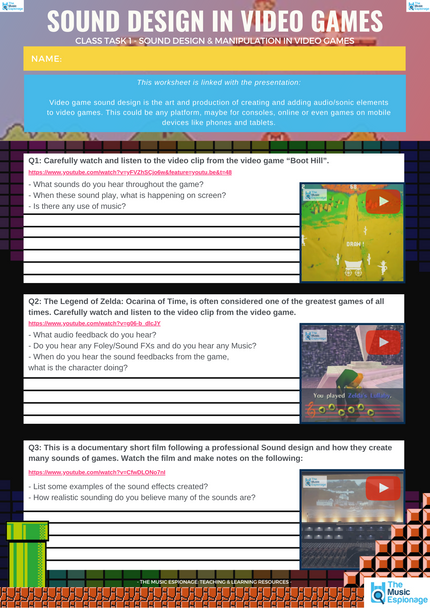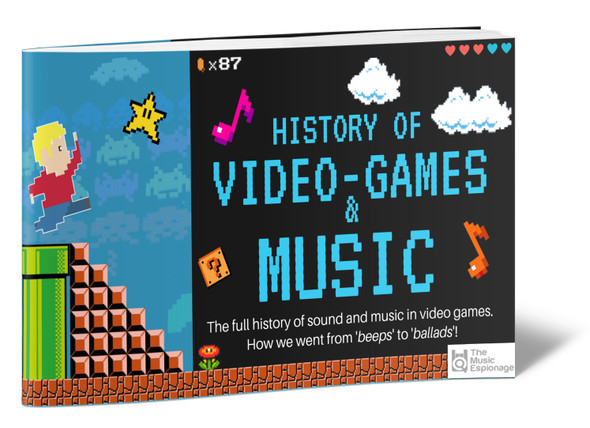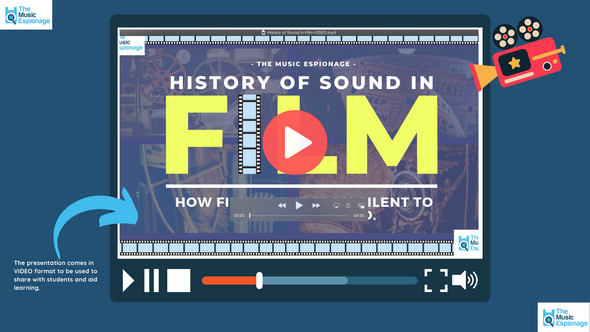Sound Design in Video Games-FULL LESSON-Distance Learning | Google Slides™
- Preview Subject:
- Visual Arts, Music, Computer Science - Technology
- Grade Levels:
- 8th, 9th, 10th, 11th, 12th, Higher Education, Adult Education, Staff
- Resource Type:
- Lectures, Worksheets, Activities
- Format:
- Zip (135 MB|40+)
- Total Pages:
- 40+
- Answer Key:
- Included
Description
Sound Design in Video Games – FULL LESSON
This lesson and supporting resources provide a detailed account of how sound is created, manipulated and shaped for computer and video games. The lesson specifics how and why sounds are important to the player’s experiences and what they provide in terms of feedback and game immersion. This lesson would work really well with the“History of Video Games and Music” lecture and together provide a detailed outline of gaming sound and music.
All material, presentations and worksheets, within this resource has been recently updated and now includes links to online 'Distance Learning' versions through Google Slides™. This allowing extra flexibility and continued support if students are learning and engaging from outside the classroom at home.
The presentation is more 40 slides, each with an eye-catching design for better student engagement and also linked to class-room tasks that feed-in and work along with the presentation.
The lecture covers:
- The Gaming Industry
- Why do games need sounds
- What is Sound Design in Games
- The Role of Sound within Games
- The Importance of Sound within Games
- Player audio “Feedback”
- Who is a Game Sound Designer and their role
- Two types of sound within games (Diegetic and Non-Diegetic)
- Spotting Good Sound Design in Games
- Sound build to suit the action
- Representing actions with a sound
- Shaping sound – Frequency – EQ – ADSR (Envelopes) – Attenuation – Reverb
Moreover, throughout the presentation, there are really useful embedded YouTube examples, with links to the videos to support and aid learning.
The resource also comes with 3 classroom tasks/worksheets with extremely useful listening exercises that link with the presentation/lecture itself, this keeping learners engaged throughout.
Task one overs spotting good sound design in early video games from the first generation, and also watching how real game designer work within the studio
Task two is an excellent listening exercise with 4 lots of audio examples included. What makes a good “jump” sound or a good “laser” sound? All the audio example are included with the resource.
Moreover, there is an additional game design task where students research and then tasked with creating their own game sounds for a video-game character. You will need your own audio editing software for this task.
Finally, the presentation/lecture also come in video form to aid learning and can also be used as a revision tool to help students, this is .mp4 format.
In this package:
- PRESENTATION – Sound Design in Video Games-(.pdf High quality)
- PRESENTATION – Sound Design in Video Games(.pdf compressed quality)
- PRESENTATION – History of Video Game and Music (.pptx PowerPoint - read-only)
- VIDEO – Revision video of the presentation to aid learning and help with student learning.
- GOOGLE SLIDES™ - Resource sheet with links to Digital Learning version of material (.pdf)
=========================
- WORKSHEET – Class Task 1 linked with Presentation-STYLED (.pdf)
- WORKSHEET – Class Task 1 linked with Presentation-NO STYLE (.pdf)
- ANSWERS – Class Task 1 linked with Presentation (.pdf)
=========================
- WORKSHEET – Task 2: Listening Skills – What makes good sound design-STYLED (.pdf)
- WORKSHEET – Task 2: Listening Skills – What makes good sound design-NO STYLE (.pdf)
- ANSWERS – Task 2: Listening Skills – What makes good sound design (.pdf)
=========================
- WORKSHEET – TASK 3: Creating sounds for a game assignment + written report NO STYLE (.pdf)
WARNING – Before you buy this resource PLEASE READ!
Within this presentation are YouTube video links – We have tried to ensure that audio and visual examples are suitable for the classroom, but this really depends on the learning environment and age range of your learners. It is the teacher/lecturer’ responsibility to monitor and check before engaging with learners. Thank you for understanding!
=====================================================
Product License:
Unlimited copies for you. However, you may not distribute additional copies to friends, fellow teachers, or students.
Discounts
Earn 5% back in Amped Up Points with each purchase and 20% back in store credit with each product review (100 points = $1 store credit)
Comments...We Love 'Em!
Your feedback brightens our day and helps us continually improve our products. If you download this, we'd appreciate it if you'd leave a comment PLUS you earn 20% back in store credit.
Get Social with The Music Espionage:
If you would like to see more of our lessons, infographics, and teaching resources please like and follow on social media platforms




























